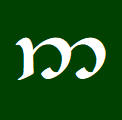8.53 Plant, Herb Q. laima n. “plant” A noun for “plant” appearing in Quenya Notes (QN) from 1957 derived from the root √LAY (PE17/159). Conceptual Development: The Qenya Lexicon of the 1910s had ᴱQ. laute (lausi-) “living thing, (esp.) vegetable” and ᴱQ. lauke (lauki-) “vegetable, plant species”, both derived from
Select Elvish Words
Studies on selected elvish words to sort out their semantics.
Select Elvish Words 8.51-8.52: Grass, Hay
ᴹQ. liske n. “reed, [ᴱQ.] sedge” A word mentioned in the Outline of Phonetic Development (OP1) of the 1930s, with the gloss “reed” and derived from primitive ᴹ✶lisge (PE19/51). Conceptual Development: The word/root ᴱQ. LISKE “sedge, reeds” appeared in the Qenya Lexicon of the 1910s (QL/55). In the contemporaneous Name-list
Select Elvish Words 8.41-8.45 Harvest, Grain, Wheat, Rye
8.41 Crop, Harvest ᴱQ. silkesse n. “harvest [product], *produce” A noun appearing as ᴱQ. silkesse “harvest” in the Qenya Lexicon of the 1910s under the early root ᴱ√SḶKḶ¹ that was also the basis for “grass” words (QL/84). Conceptual Development: The Etymologies of the 1930s updated this root to ᴹ√SALAK+wē for
Select Elvish Words 8.32-8.33: to Reap; Sickle
8.32 to Mow, Reap ᴱQ. silki- v. “to mow, scythe, mow down” A verb appearing as ᴱQ. silki- “mow, scythe, mow down” in the Qenya Lexicon of the 1910s under the early root ᴱ√SḶKḶ¹ that was also the basis for “grass” words (QL/84). Conceptual Development: The Etymologies of the 1930s
Select Elvish Words 8.30-8.31: Plough; to Sow; Seed
8.30 Plough ᴱQ. hyar n. “plough” A noun appearing as ᴱQ. hyar (hyarm-) “a plough” in the Qenya Lexicon of the 1910s under the early root ᴱ√HYAŘA [HYAÐA] “plough through” (QL/41). In the contemporaneous Poetic and Mythological Words of Eldarissa it appeared only as its stem form hyarm- “plough” (PME/41).
Select Elvish Words 8.22-8.29: to Dig, Shovel, Blade
8.22 to Dig, Delve Q. felehta- v. “*to excavate, tunnel, mine” An untranslated form appearing in Notes on Names (NN) from 1957 derived from the root √PHELEG/PHELEK (PE17/118), possibly a verb derived from *phelektā- or *phelegtā-. The derivatives of this root had to do with mines and tunnels, so perhaps
Select Elvish Words 8.12-8.15: Field, Garden, Barn, to Till
ᴹQ. peler n. “fenced field, ⚠️[ᴱQ.] fence” A noun in The Etymologies of the 1930s glossed “fenced field” along with cognate N. pêl, both derived from the root ᴹ√PEL(ES) “revolve on fixed point” (Ety/PEL(ES)). Conceptual Development: A possible precursor is ᴱQ. pelto “hedge, hedged field” from the Qenya Lexicon of
Select Elvish Words 7.45-7.46: Lamp, Candle
7.45 Lamp Q. calar n. “lamp” A word for “lamp” in notes from the late 1960s derived from √kalar- (VT47/13). This word is less well-known than Q. calma “lamp” (LotR/1121). Q. calma n. “lamp, (device for shining) light, ⚠️[ᴱQ.] candle; (day)light” A noun for “lamp” appearing in The Lord of
Select Elvish Words 7.42-7.44: Bed, Chair, Table
7.42 Bed ᴹQ. kaima n. “bed” A noun for “bed” in The Etymologies from around 1937 under the root ᴹ√KAY “lie down” (Ety/KAY). Conceptual Development: In the Qenya Lexicon of the 1910s, ᴱQ. kaima was glossed “couch” under the early root ᴱ√KAYA “lie, rest; dwell” (QL/46) and ᴱQ. kamba was
Select Elvish Words 7.412: Furniture (other)
ᴹQ. farma n. “?carpet” A word in The Etymologies of the 1930s derived from the root ᴹ√SPAR² “strew, spread, ?scatter” with two unclear glosses, one of which might be “carpet” (EtyAC/SPAR²). Its other gloss is even less clear, but might be “string” or “stray” according to Carl Hostetter and Patrick




